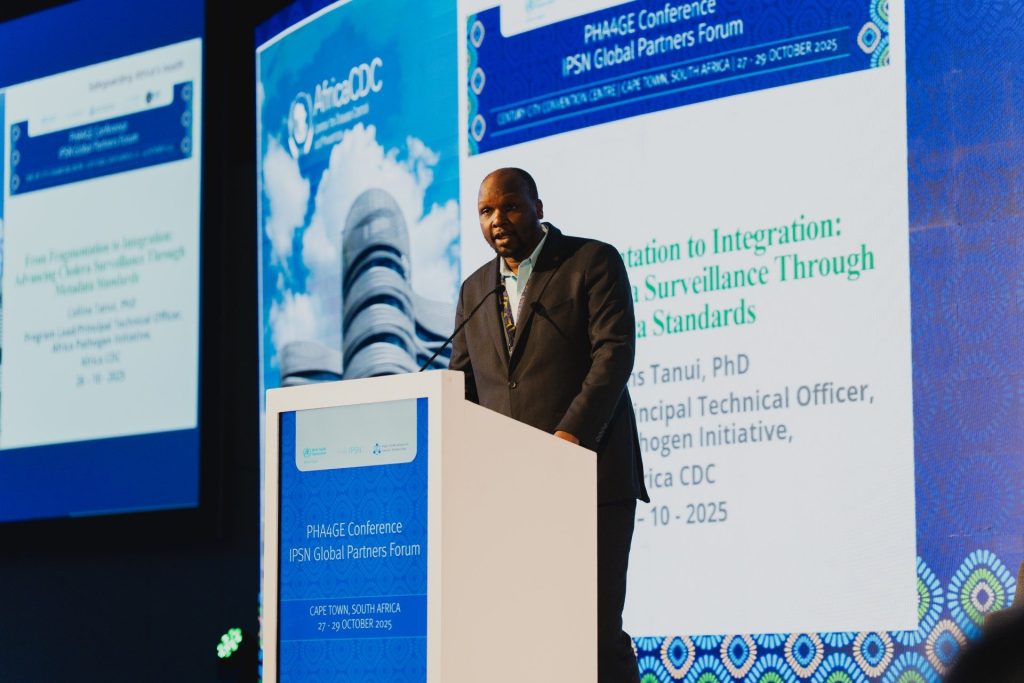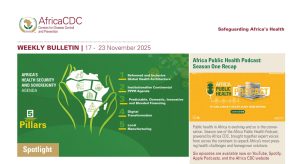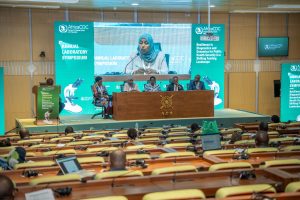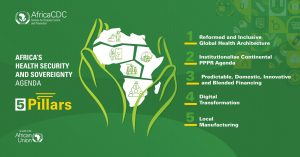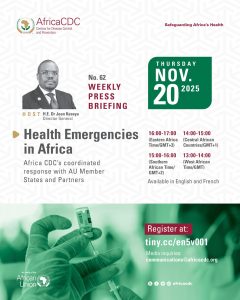Six countries have so far launched their national strategies on genomics in Africa. Ghana, Ethiopia, Malawi, Mozambique, Zambia and Nigeria have already made strides in integrating genomics into their existing public health frameworks.
Eleven countries have finalised their plans and are waiting to launch. These are the Democratic Republic of the Congo, Uganda, the Republic of Congo, Zimbabwe, Togo, Mozambique, Rwanda, Namibia, Tanzania, Morocco and Kenya.
“We have been coordinating and supporting the sequencing of priority pathogens and implementing use cases in the national strategies through projects such as the Cholera Genomics Consortium (CholGEN), the KlebNET Genomic Surveillance Platform (KlebGEN), malaria molecular surveillance, outbreak detection and response for emerging and re-emerging diseases such as mpox, Marburg and dengue,” said Dr Francis Farai Chikuse, Senior Technical Officer, Public Health Policy Institute of Genomics at Africa CDC.
Genomic tools are essential for preparedness, outbreak detection, tracking antimicrobial resistance, and informing timely treatment and control measures for priority pathogens. As of 2023, 34 out of 55 African Union Member States had next-generation sequencing capacity in public health laboratories, compared to only seven in 2019.
“The plan is to have all 55 countries equipped with next-generation sequencing capacity by 2026,” Dr Chikuse said at the Public Health Alliance for Genomic Epidemiology (PHA4GE), held from 27–29 October in Cape Town, South Africa.
Dr Chikuse said the use of genomics would strengthen disease prediction and prevention. He said it offers an opportunity to identify individuals at higher risk of common diseases like heart disease, diabetes and certain cancers using tools such as polygenic risk scores, supporting the development of more personalised prevention strategies.
When it comes to infectious disease surveillance, genomics provides a deeper understanding of disease transmission, virulence and resistance, which is crucial for tracking and controlling outbreaks. It is used in real time for surveillance of diseases such as COVID-19, influenza and tuberculosis.
During outbreak investigations, it can precisely identify the source and spread of an outbreak, helping to implement more effective containment measures, said Dr Chikuse.
It is also invaluable in monitoring the spread of antimicrobial resistance, allowing for better tracking and management of infections caused by drug-resistant bacteria, parasites and fungi, as well as informing the development and evaluation of interventions such as vaccines, diagnostics and therapeutics.
Twenty-one countries — including the DRC, Uganda, Mozambique, Ethiopia, Cameroon, Malawi, Zambia, the Republic of Congo, Zimbabwe, Kenya, Ghana, Morocco, Togo, South Africa, Tanzania, Rwanda, Namibia, Botswana, South Sudan, Burundi and Angola — are currently preparing multi-sectoral stakeholder workshops to finalise and validate their strategies before launch.
In developing these strategies, countries have been leveraging the Africa CDC Pathogen Genomic Surveillance Framework and the WHO Global Genomic Surveillance Strategy.
“Countries must lead genomic strategy development with input from all stakeholders, ensuring engagement and buy-in for sustainable implementation,” said Dr Chikuse.
He said collaboration between Africa CDC–Africa PGI, in-country partners including the Global Fund, WHO, US CDC and CHAI, as well as key stakeholders in public and private laboratories, academia, One Health institutions, research institutes and other sectors, will ensure success.
“This will ensure strong national leadership, sustained political commitment, financial investment and a robust governance framework, with a focus on public health decision-making and all priority pathogen use cases — including, in some countries, human genomics and precision medicine — while strengthening data management and promoting data sharing,” said Dr Chikuse.
While efforts to establish national genomics strategies are ongoing, other Africa CDC projects are focused on bringing together fragmented cholera surveillance data through advancing metadata standards.
This work is part of Africa CDC PGI 2.0, which has four priorities: capacitating and expanding a skilled workforce across Africa CDC and Member States; implementing integrated molecular and genomic surveillance of high-priority use cases for enhanced outbreak detection and response; promoting timely sharing of quality-assured data through AGARI, the African Pathogen Data Sharing and Archiving Platform; and strengthening coordination and sustainability mechanisms.
Speaking at PHA4GE, Dr Collins Tanui, Programme Lead and Principal Technical Officer, Africa Pathogen Initiative, Africa CDC, said they were expanding use cases, regional collaboration and data-sharing networks through the Africa PGI Integrated Genomic Surveillance for Outbreak Detection Project, the Africa PGI AMR Project and the Africa PGI Malaria Molecular Surveillance Project.
For instance, under the Cholera Genomic Surveillance (CholGEN) project, Dr Tanui said they aim to understand how cross-border transmission occurs, whether events coincide, how frequently transmission happens, how long transmission persists before detection, whether transmission patterns changed after CholGEN, whether spread remains within a region, whether co-circulating lineages exist, and how antimicrobial resistance is acquired and spread, including differences between outbreaks, genetic variation and transmissibility.
When it comes to metadata — structured information used to describe, locate, explain and manage data resources in a human- and machine-readable format — Dr Tanui said metadata ensures consistency, accuracy and comparability across different studies and regions, enabling more precise outbreak tracking, better understanding of transmission routes and genetic evolution, and facilitating data sharing and global collaboration.
Dr Tanui and his team have harmonised protocols for documenting and organising data related to cholera outbreaks and sequencing. The CholGEN project has adapted minimal metadata standards in seven countries.
To ensure wider usage of metadata, he said there is a need to integrate metadata standards into existing surveillance systems and develop harmonised, user-friendly data collection tools.

